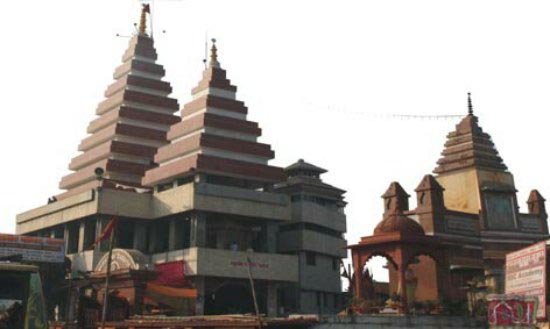Mahavir Mandir

Information of Mahavir Mandir, Patna, Bihar
The temple of Lord Hanuman situated in Patna, Bihar is the Mahavir temple which is one of the holiest Hindu temples. It can be said that millions of visitors tend to visit the temple every year and is considered to be the second most visited shrine in entire North India. The secretary of the Mahavir Mandir temple Trust, Patna is Acharya Kishore Kunal. It has the second highest budget in North India and the earning of this temple has increased to an average of rupees one lakh per day. On the traditional worship days of Lord Hanuman i.e., Saturday and Tuesday, one can see long winding queues. Numerous people tend to visit this temple on account of Ram Navami and New Year celebration. The trust of this temple has been named as Mahavir Sthan Nyas Samiti who is responsible to look after the working and development of the temple. The trust is also running human welfare organizations such as Mahavir Cancer Institute & Research Centre.
Mahavir Mandir Religious Significance
This temple is one of the leading hanuman temples in India where people throng the temple in order to obtain solace from the worship of Lord. The temple is considered to be 'manokamna mandir' where the wishes of the devotees tend to be fulfilled.
Mahavir Mandir Mythology & History
According to Patna High Court judgement, 1948, the temple prevails since time immemorial. However, the historical facts and traditions state the fact that this temple was actually created by Swami Balanand who was an ascetic of Ramanandi cult in the year 1730 AD. There are two idols in the temple, where one idol of Hanumanji protects good people and the other idol of Hanumanji is for the abolition of the wrong people. The temple is basically of the Ramanand cult although from the year 1900 AD, it has belonged to the Gosain Sanyasis till 1948 AD. Patna High Court declared this temple to be a public temple since the year 1948 A.D. Between the year 1983 and 1985, the temple was reconstructed and a magnificent temple was build at the old site because of the initiative made by Kishore Kunal with the contribution made by the devotees. At present this temple is considered to be one of the most magnificent temples in the country.
Mahavir Mandir Architectural Significance
The entrance to the temple is towards the north where devotees are requested to keep their shoes. It is a temple complex bundled with all the facilities for the visitors as well as worshippers. On entering the main premises, you see a row of steps made on a raised platform that can take you towards the main temple which has been named as Garbhagriha, the main sanctum sanctorum of Lord Hanumanji. There is a passage that has shrine of Lord Shiva. The first floor has basically the shrines of four deities namely Lord Rama, Goddess Durga, Lord Shiva and Nandi. It can be mentioned that the floating Ram-setu Shila has also been placed in this floor only. The second floor has been constructed for ritual purposes where chanting of mantras, japa, recital of Holy Scriptures etc. is conducted on a regular basis. This floor has also been adorned with pictorial depiction of the scenes from Ramayana. Below the Peepal tree there is a temple which has been designed in a cave like architecture belongs to Shani-maharaj. Another feature of the temple is the prasadam that is offered to the deities and is prepared by the experts from Tirupati.
- Andhra Pradesh Temples
- Assam Temples
- Bihar Temples
- New Delhi Temples
- Goa Temples
- Gujarat Temples
- Jammu and Kashmir Temples
- Karnataka Temples
- Kerala Temples
- Madhya Pradesh Temples
- Maharashtra Temples
- Odisha Temples
- Punjab Temples
- Rajasthan Temples
- Sikkim Temples
- Tamil Nadu Temples
- Telangana Temples
- Uttar Pradesh Temples
- Uttarakhand Temples
- West Bengal Temples